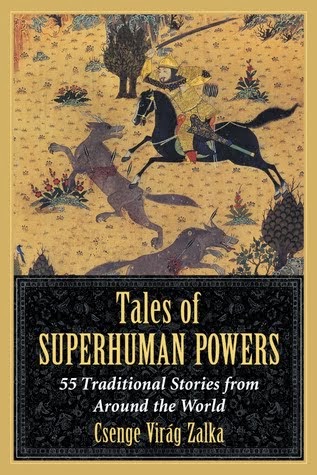Cuentos, leyendas y mitos de Nicaragua
Pedro Alfonso Morales
Ediciones Distribuidora Cultural, 2014.
This volume contains a total of 24 stories: 12 folktales, 11 legends, and 1 myth. Nine out of the folktales have been collected by students from their families; three are re-tellings by various authors and researchers. Similarly, the legends are longer or shorter depending on the version. The volume itself is visually eclectic: It was printed on color paper, so the stories are told in pastel blues, yellows, greens, and pinks, and complete with illustrations that range from simplistic to annoyingly childish. The book comes with an introduction about Nicaraguan oral tradition, as well as a study guide for students; all in all, it is more an educational project than a folklore publication. With that said, I am still a fan of having children collect stories from their own family traditions - and in this case they came up with some really great ones.
Highlights
The most memorable story in the book is, without a doubt, the legend of The Women of Corn Island. It is a classic Amazon tale, in which the island is ruled by a women-only society; they hunt, fight, work the land, and only allow men to visit once a month, in order to make babies (amazing detail: Women know they are pregnant because at the moment of conception a glowing butterfly emerges from their belly button).
 |
| Women and men marching for indigenous rights, source here |
Legend says that when the white colonizers arrived, the women, rather than being killed or taken as slaves, all walked into the ocean, and turned into sea foam, leaving their island abandoned.
I also had a soft spot for the story of a girl who loved swimming in the ocean so much that she even did so on Holy Week, despite her mother's warnings. In the water, she turned into a mermaid, and swam away, singing. I am not sure it was a punishment for her.
On a darker note, there was the bone-chilling tale of María Angustia, a young wife who refused to cook, and kept pestering her neighbor for food and for feeding her husband. In the end, the neighbor lady told her that she should bring some intestines from the cemetery to supplement pork in the dinner - which María did, except the deceased owner of said intestines began haunting her, and dragged her away in the dark of the night.
Connections
Similar to most other South- and Central American countries, there was a legend about the La Llorona; and similar to many Caribbean islands, there was also a legend about a woman that peeled her skin off to shapeshift. In this case, she turned into a coyote every day, until her husband sprinkled salt inside her discarded human skin, and she could not put it back on.
I also encountered familiar tale types such as Cricket the Fortune-teller, the Loquacious Princess, and the Extraordinary Helpers (with a flying steamboat!). And of course there was another Devil husband with golden teeth, who in the end got lured into a bottle by his mother-in-law, the way djinn are usually tricked... Ever since then, when the Devil shows up in the shape of a whirlwind, people just have to yell that his mother-in-law is coming with a bottle.
 |
| Picture from here |
Where to next?
Honduras!









Wouldn't you want the woman not being able to turn into a coyote rather than the coyote not being able to turn into the woman? I mean if she can't turn human, you just have a permanent (presumably murderous) coyote.
ReplyDelete